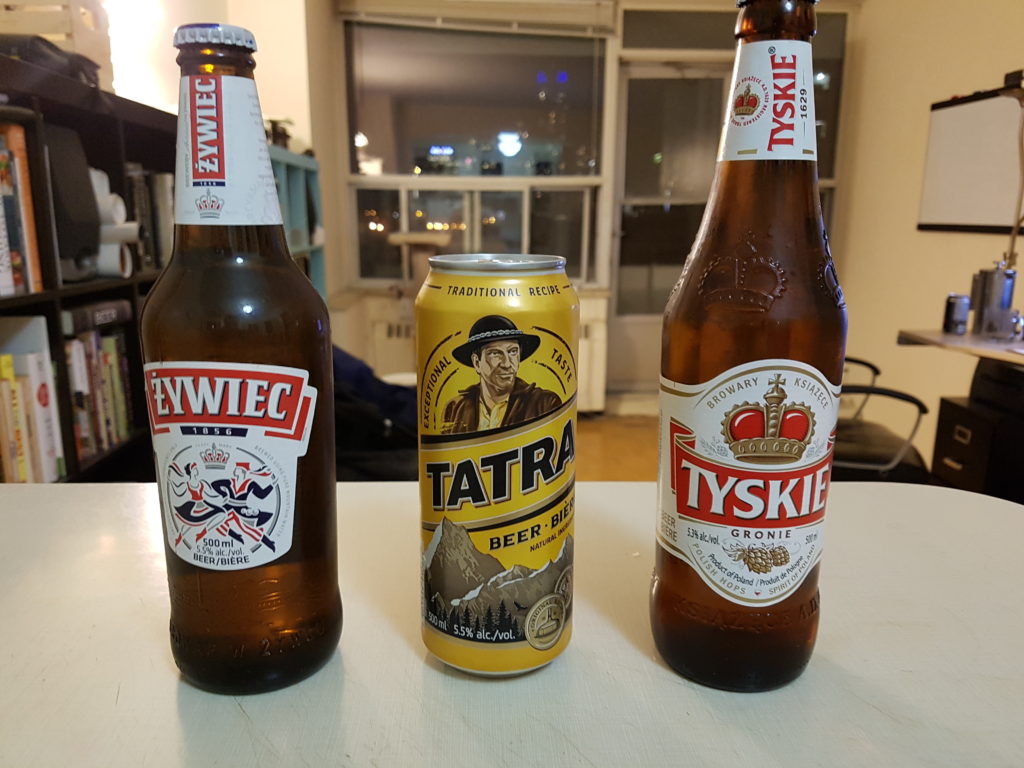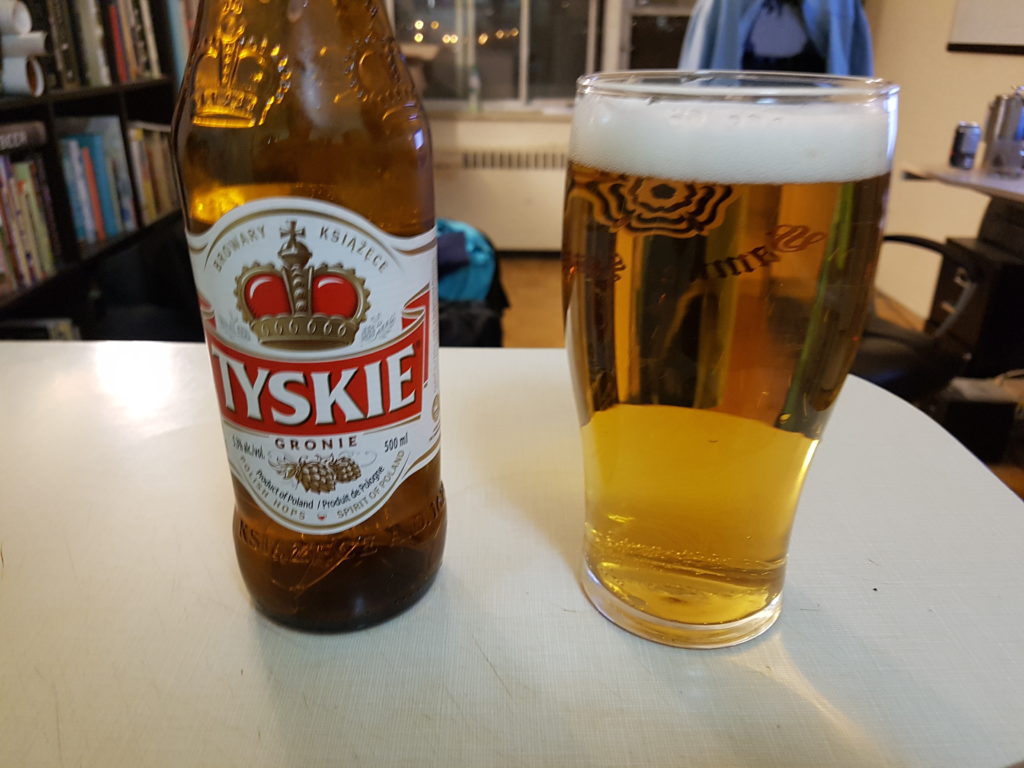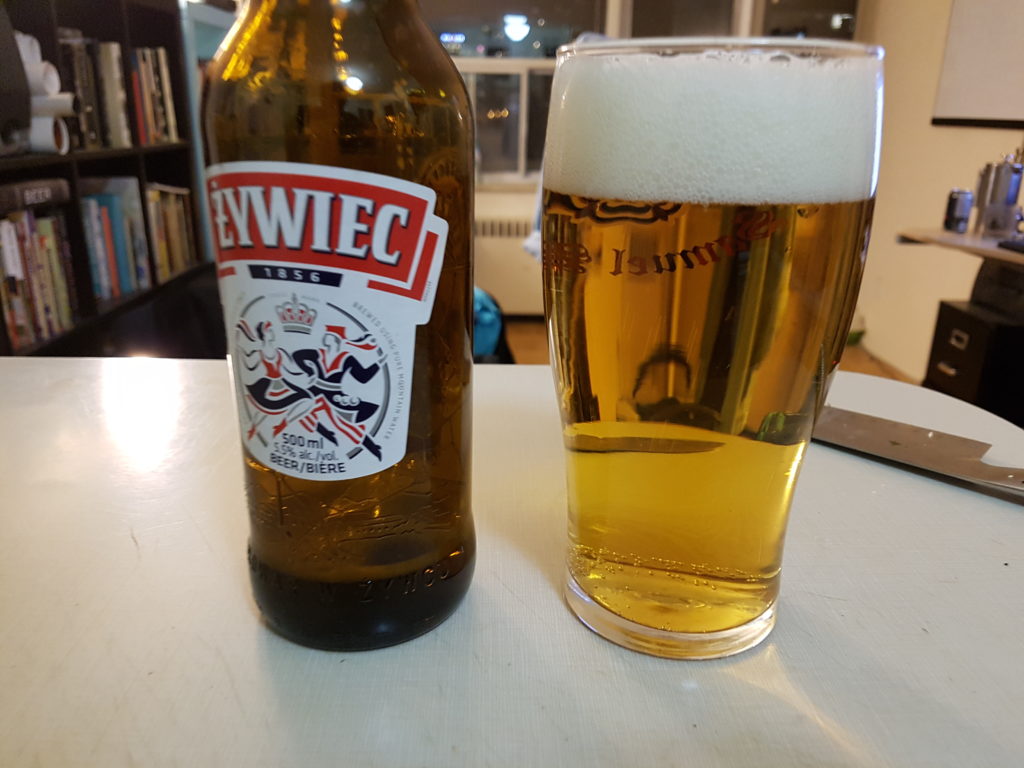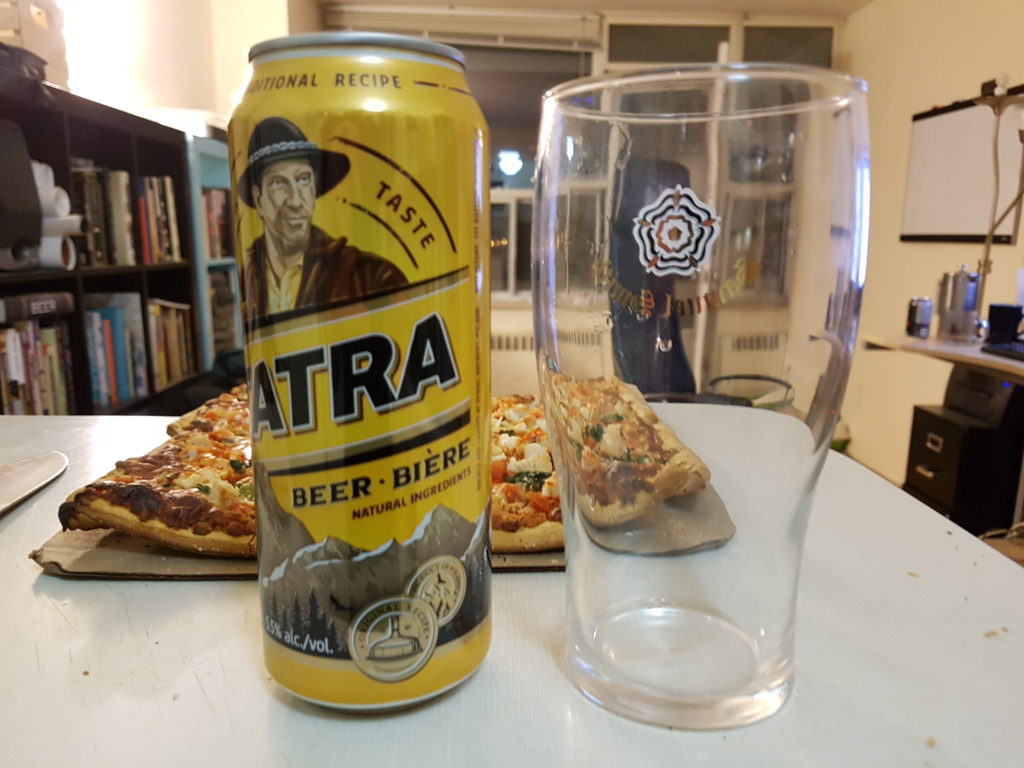There are things that you learn about yourself when you try to do a new thing, just like when I start getting lol coaching sessions and I didn’t know I was so bad at the game. Since I started teaching Beer Appreciation at George Brown College, I have learned the following things.
First, I find it pretty hard to come down after speaking in front of a group. I’ve got nerves that jingle jangle jingle and the only thing for it is decompression over time. I’ll be up when they’re playing the slap chop infomercial. Apparently you can use them on a boat. For that reason I may try and do more writing Monday nights after class. Nothing serious, you understand. Just skylarking.
Second, teaching is hard on the ol’ fitbit. I am apparently something of a pacer. I seem to average about 8000 steps a class.
Third, it’s sort of hard to believe how much I’ve learned about beer in such a short space of time. I didn’t really start learning about beer until 2009 and while that is eight years, it doesn’t really seem like it. I guess the seventh anniversary of the blog will be this year. I surprise myself rattling off the names of malt varieties or obscure trivia or ester and terpenoid names when the kids ask questions. I absorbed a lot and until you get into context it’s hard to know what you know.
The things that surprise and delight are odd as well.
I have been fairly heavily redesigning the course’s structure. I think geography, history, and temporal power (and I’m using that in the medieval sense meaning “worldly” as opposed to the Whovian sense of “wibbly wobbly timey wimey”) are as important to the development of beer as anything else and are sort of crucial to understanding where everything comes from. I’m not sure people need to know the difference between a Pale Lager and an American Lager. I think broader historical trends provide a better fundamental base.
That said, I was left at the beginning of the course with some odd men out. Men named Molson, Keith, Oland and Anheuser, specifically. They were already in stock, and I’m sitting there asking “What can you do with them?” Does anyone really need to spend an entire hour on American lager styles post 1900? I’d say no, or I would have said no. The exercise I set the class was to taste (without any instruction, mind) all four side by side. “These beers are all pretty similar. Tell me what’s different about them.”
Well, what a good way to gauge a room. They didn’t have the vocabulary to talk about what they were tasting, so I just told them to throw out descriptors. Tell me how they look, smell, taste, feel. Anything. With no training, the room told me that Keith’s smelled like cooked cabbage and skunk, and that Moosehead was more highly carbonated, more lightly colored, and almost completely neutral in flavour. They told me that Budweiser was leaning a little toward apple cider. They told me that Molson Canadian was the best one because it tasted like bread and citrus. I don’t know which one would win next time, and neither really do I care. The exercise is sort of the important thing.
I want to say that the kids did really well. They did do really well, but the average age in the room is closer to 40 than 20, so I guess I’ll say “students.”
There’s a group of amateurs there diagnosing off flavours and flaws.
Recently, the Canadian representatives for Tyskie got in touch to ask if I would like to try their Polish lager. Because I’d done that macro lager excercise, instead of thinking “not really my beat” I went with “well, what a great opportunity to learn something.”
TYSKIE is a perfectly clear pale lager with a hint of white grape ester and a touch of sugared barley grape nut character in the aroma along a touch meadow grass from the hops being used. The bottle says they are Lubelski and Marynka. I have used Marynka in a collaboration beer with Innocente in Waterloo and I am relatively sure we used more of it than is in this beer. In the bottled version I’m trying (I came home one night and drank the cans the nice young man at the PR company sent) there’s just a hint of DMS. The whole issue leans quite sweet, and it’s a little hard to get the hop bitterness, if there is any.
Then I thought “hey I don’t know about those other Polish beers.” I used to drink ZYWIEC all the time. It came in four packs of cans for nine dollars. This was before I cared about what people thought about what I drank. ZYWIEC has that same crystal clarity although the colour might be a twitch darker. The hops are a little more pronounced. Floral. Maybe chrysanthemum. A decade ago I wouldn’t have picked up chrysanthemum. I would have been more interested in the other three cans.
TYSKIE is like a lighter Helles. ZYWIEC might be closer to a northern German Pilsner. Both of them are lighter than the styles I’m describing, but you can feel the conceptual bones setting even as you’re breaking them down.
If you go stand in any Toronto LCBO that isn’t an all brand, eventually you’re going to see some physical labourer with paint stained jeans walk out with a flat of TATRA. There’s a class of beer drinkers in Ontario we don’t talk about enough. I walk a lot and I like to go to the LCBO and observe. You wouldn’t believe the amount of Euro Lager purchased by people in physically demanding jobs because the cans are inexpensive. I see people walk out with a flat at a time. I’m not judging. Historically that is what beer is for. It serves a purpose. Anti-inflammatory and caloric. It could be a lot worse. It could be Old Milwaukee Ice. If you’re buying Old Milwaukee Ice before 3:00 PM, brother, you have got problems.
But I’ve never tried TATRA. For two dollars I can afford to learn something. The can says it’s made at ZYWIEC. The date code says the best before is February next year, so it’s pasteurized to hell and gone. It’s slightly darker than either of the others. Earthier hop tones, more vegetal with a touch of caramel in the background and an underlying sherryish biscuit note that’s not completely out of place in an English Ale. More interesting than the other two, but not better.
Googling around for some assistance in stylistic definition (Vienna-ish?) I find out Poland is the third largest consumer of beer per capita and that after the fall of the Soviet Union the breweries were mostly bought out by international conglomerates. Also, I guess I missed Okocim at the LCBO. Maybe I’ll try that later. Time was there was no craft beer and you just tried everything at the LCBO. Maybe no one starting out will ever do that again.
I think TYSKIE is the cleanest of the products here. It’s certainly light and approachable. ZYWIEC and TATRA are maybe more interesting because they’re less refined.
I’ve learned one other thing. I have the vocabulary and expertise to break down what I am tasting and I can explain it to other people if you give me a class to teach, but the important factor is the willingness to try. In order to get better you need a curiosity about the world around you. It’s day in and day out trying new and old things. You’re building a better mental catalogue, a mnemonic relational database. It will never be complete, but it will be more complete.
If all that came out of tasting some TYSKIE is that I understand the guy buying TATRA better, that’s a win. My shin splints hurt from those 8000 steps. Anti-Inflammatory and Caloric.




The best of all the Polish beers was simply labeled EB (Elbląg Brewery). It got bought out years ago by Zywiec (Heineken). It was a delicious Bavarian style lager with nice malt aroma and flavour. It was my go to summer beer for years, so I really wish they would bring this back.
Another enjoyable read!
Great post! I like your take on some of the Polish macro-breweries out there. As you mentioned, you did miss Okocim at the LCBO, but there are a few other Polish macro-brews at the LCBO that you missed as well, including Lech, Warka and Lezajsek. Although, in style and taste, they all don’t really differ from the ones you sampled.
Like in many other beer-drinking nations, there is a fledgling, but robust, craft beer scene. There are dozens of small-scale independent breweries in Poland, with new ones popping up all the time: http://polskicraft.pl/browary-3 (link in Polish, but I’m sure you can use Google translate). There is also a very popular YouTube star named Tomasz Kopyra (http://blog.kopyra.com/) who is the leading craft beer aficionado in Poland, who reviews beer (both domestic and foreign), consultants on new brewery projects, judges in national competitions, etc. etc. His videos are mainly in Polish, but there are some English language here and there: https://www.youtube.com/channel/UCLm7DMKc2OAPTihoGQwCWmw
The craft beer scene in Poland is exciting to watch. They are very close to great brewing countries like Belgium, Germany and the Czech Republic, from which they draw a lot of inspiration. But with the easy availability of information from around the world online, there are also a lot of influences from the US craft brewing scene. It would be great to see some of the Polish craft beers at the LCBO one day….
I’d love to hear your thoughts on Warka!